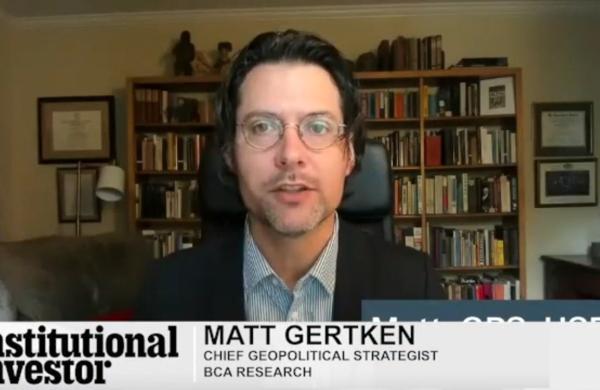As 2016 approaches, there are signs that U.S. homeowners have truly recovered from the 2008–’09 financial crisis. Those who were in trouble have refinanced, and new buyers are entering the market. For mortgage investors, the long recovery has been a source of easy money, but to keep up yields they’re now turning to nonqualified loans.
“In 2010 if you invested with a structured credit manager who was investing in mortgages, that bet was guaranteed to provide positive returns because of the amount of beta in the recovery trade, but that trade is over now,” says Greg Parsons, CEO of New York–based Semper Capital Management, a $1.1 billion specialist in residential and commercial mortgage-backed securities.
U.S. mortgage delinquencies have fallen to precrisis levels, according to the “National Delinquency Survey,” released on November 17 by the Washington-based Mortgage Bankers Association. At the end of the third quarter, the delinquency rate for mortgages on one- to four-unit residential properties had dropped to a seasonally adjusted 4.99 percent of all loans outstanding — the lowest since the first quarter of 2007. Meanwhile, the foreclosure starts rate hasn’t been lower since the second quarter of 2005. These numbers show that there isn’t much left to recover in the recovery trade, so investors will need to shift their focus to new mortgages.
Parsons says nonqualified mortgages — loans for first-time buyers that banks and other traditional lenders can’t or won’t service — are the next chapter for investors. But they and borrowers will have to rethink what financing looks like, he notes.
There appears to be plenty of opportunity. A report last year by Deutsche Bank analysts Richard Mele and Ying Shen put the size of the U.S. nonqualified mortgage market at roughly $50 billion. The Deutsche report also shows that as demand for such mortgages increases and lending formulas evolve, the nonqualified marketplace could grow to as much as $400 billion.
Right now most potential candidates for nonqualified loans are ultra-high-net-worth individuals who need jumbo mortgages for their expensive homes. But nonqualified borrowers could also be self-employed, work on commission or have recently repaired their credit.
New data from Washington-based think tank the Urban Institute show that even with traditional lenders finding it harder to extend credit, liquidity remains at the prebubble levels of the early 2000s. This means that the overall market is still healthy, as housing sees robust demand. Private capital is increasingly responsible for maintaining that liquidity.
Gapstow Capital Partners, a $1 billion credit investment firm based in New York, works with a slate of money managers to form funds or originate loans for nonqualified mortgages, which include structures such as balloon mortgages and interest-only loans.
Dealing in nonqualified mortgages requires a certain kind of expertise not readily found at many credit firms. To invest in these loans, managers must build their own conduits to mortgage brokers and originate, warehouse and securitize the loans. For its part, Gapstow invests as a limited partner in funds that its affiliated managers create, and sometimes in the loans themselves.
“The structures are changing,” says Christopher Acito, Gapstow’s founder, CEO and CIO. “Not everything is in a fund format anymore.” Other players in the space include New York–based Blackstone Group and Los Angeles–headquartered Oaktree Capital Management.
Semper’s Parsons compares the evolution of the nonqualified market to the dynamic between high-yield and investment-grade bonds. “This is going to be an interesting opportunity set as private capital steps in,” he says. “Once these firms start reaping the rewards of the nonqualified mortgages, I find it hard to believe that the banks aren’t going to find some way to get back in.”
Semper’s $430 million MBS Total Return Fund is up 3.9 percent year-to-date. Currently, almost 70 percent of the fund’s assets are allocated to nonagency mortgage-backed securities, which account for more than 70 percent of returns.
Parsons cites new financing structures like peer-to-peer mortgage lending as one way that individuals who need a nonqualified mortgage have been able to find a loan. For example, Boston area–based peer-to-peer lender National Family Mortgage has funded more than $350 million in mortgage loans between family members since 2012, according to the firm’s web site.
Nonbank lending platforms like Prosper Funding and loanDepot are also financing mortgages by pairing lenders and borrowers. Those transactions can be peer-to-peer or involve hedge funds and banks. As of September, Foothill Ranch, California–based loanDepot financed a total of $20.9 billion worth of mortgages, according to news and data provider Inside Mortgage Finance.
Other parts of the nonqualified space are less novel: Managers like the ones that Gapstow works with are backing loans that more closely resemble something a bank would provide. Such loans and those from platforms like loanDepot can end up in a securitized basket that gets rated much like agency-backed mortgages.
A Goldman Sachs Group report this March suggested that platforms such as National Family Mortgage and loanDepot, hedge fund lenders and other so-called shadow banks operating in the consumer debt market could make $11 billion in profits that banks otherwise would have on traditional lending fees over the next five years. And that’s before the potential investment loss when investors start buying baskets of securitized loans offered by hedge funds or putting their own capital to work with peer-to-peer lending services.
For investors, all of this activity means more options to participate in the mortgage market, but those investments will be different from traditional home loans and backed by a more diverse group of financial firms. Gapstow’s Acito and Semper’s Parsons reckon that to succeed, participants will have to understand the credit markets at a granular level or work with a manager that does. “Investors in this market are going to be best served by finding managers that can do their own credit work,” Parsons says. “The barriers to entry going forward are going to be complex and require a lot of analytics.”
Get more on fixed income.






